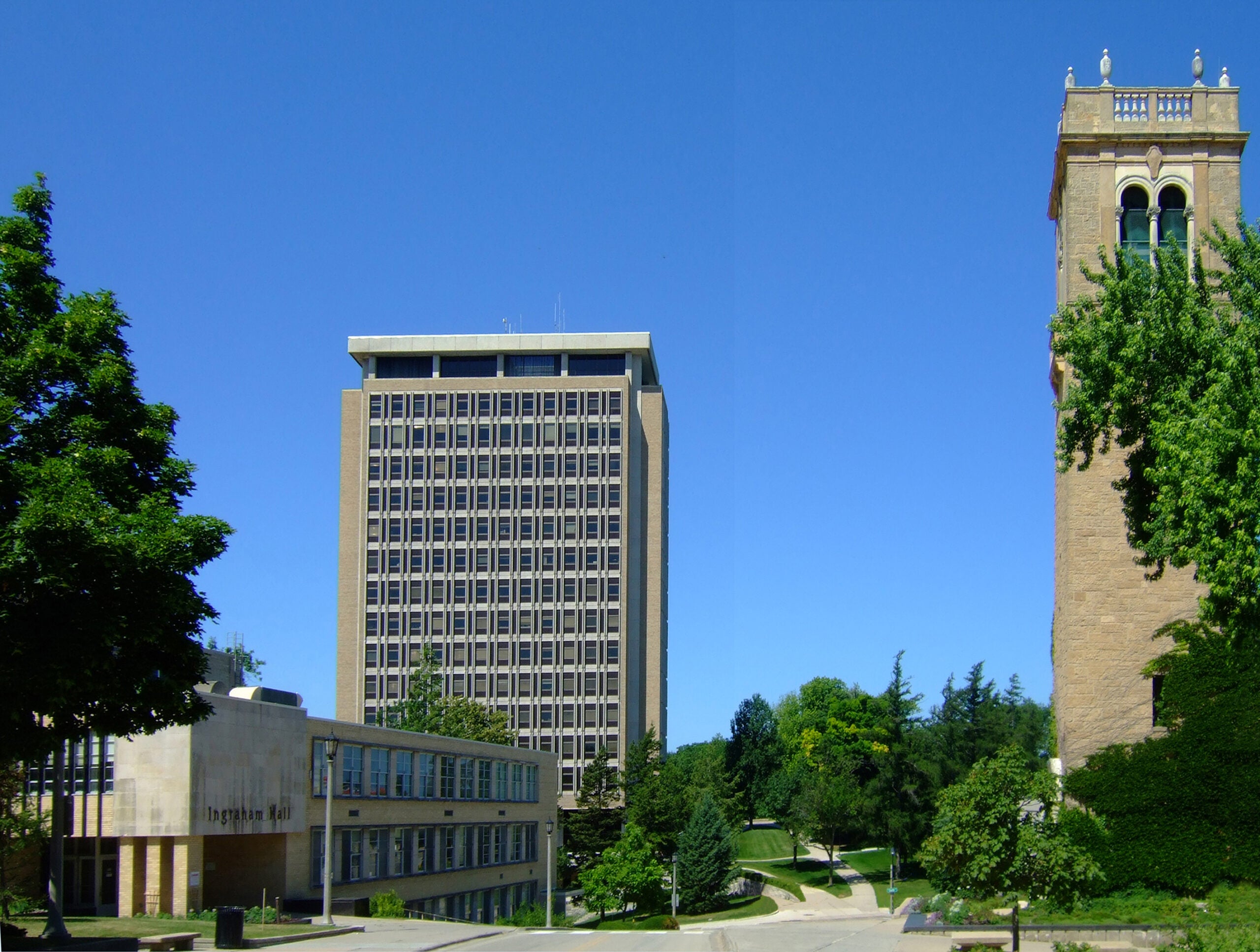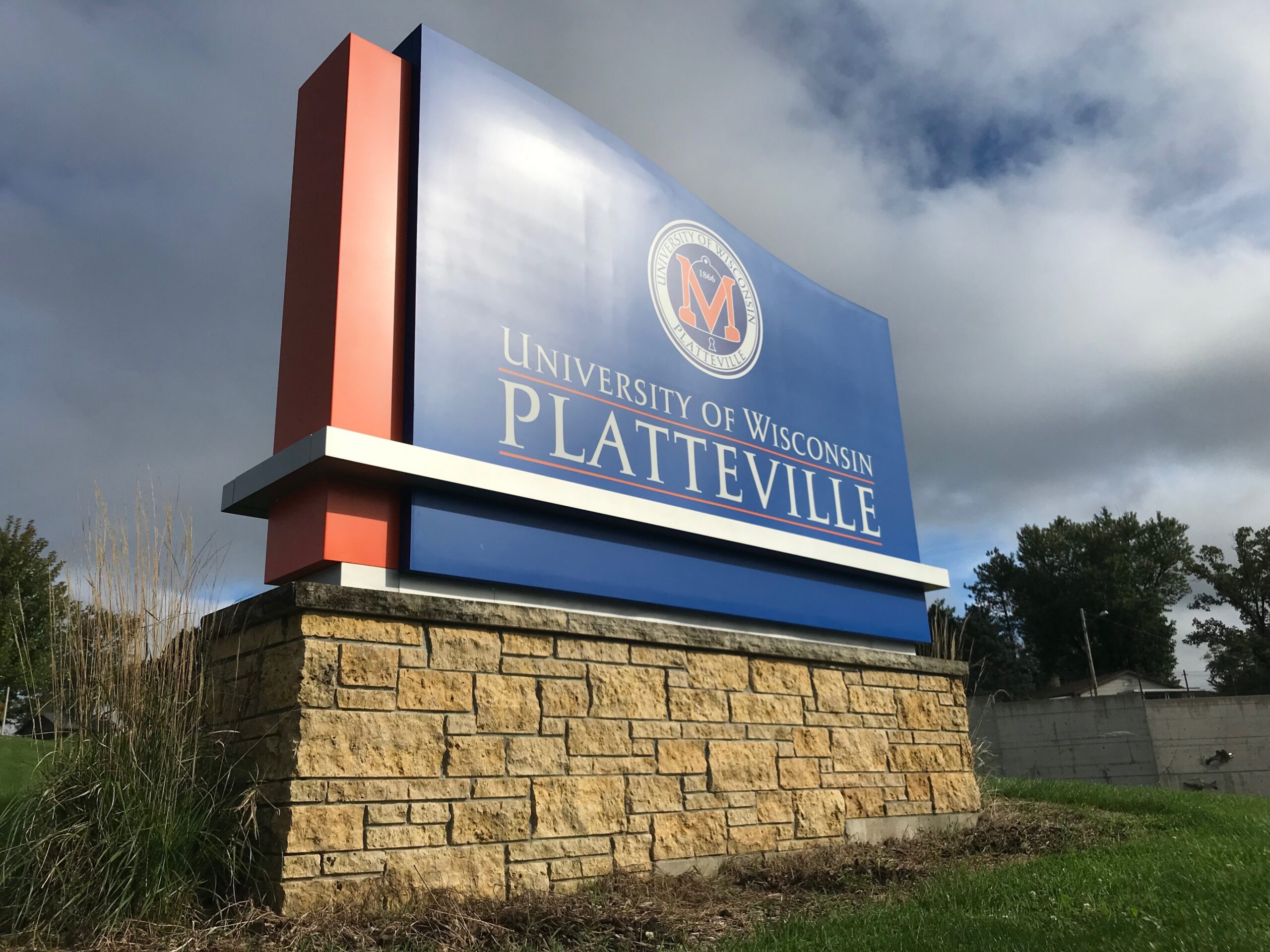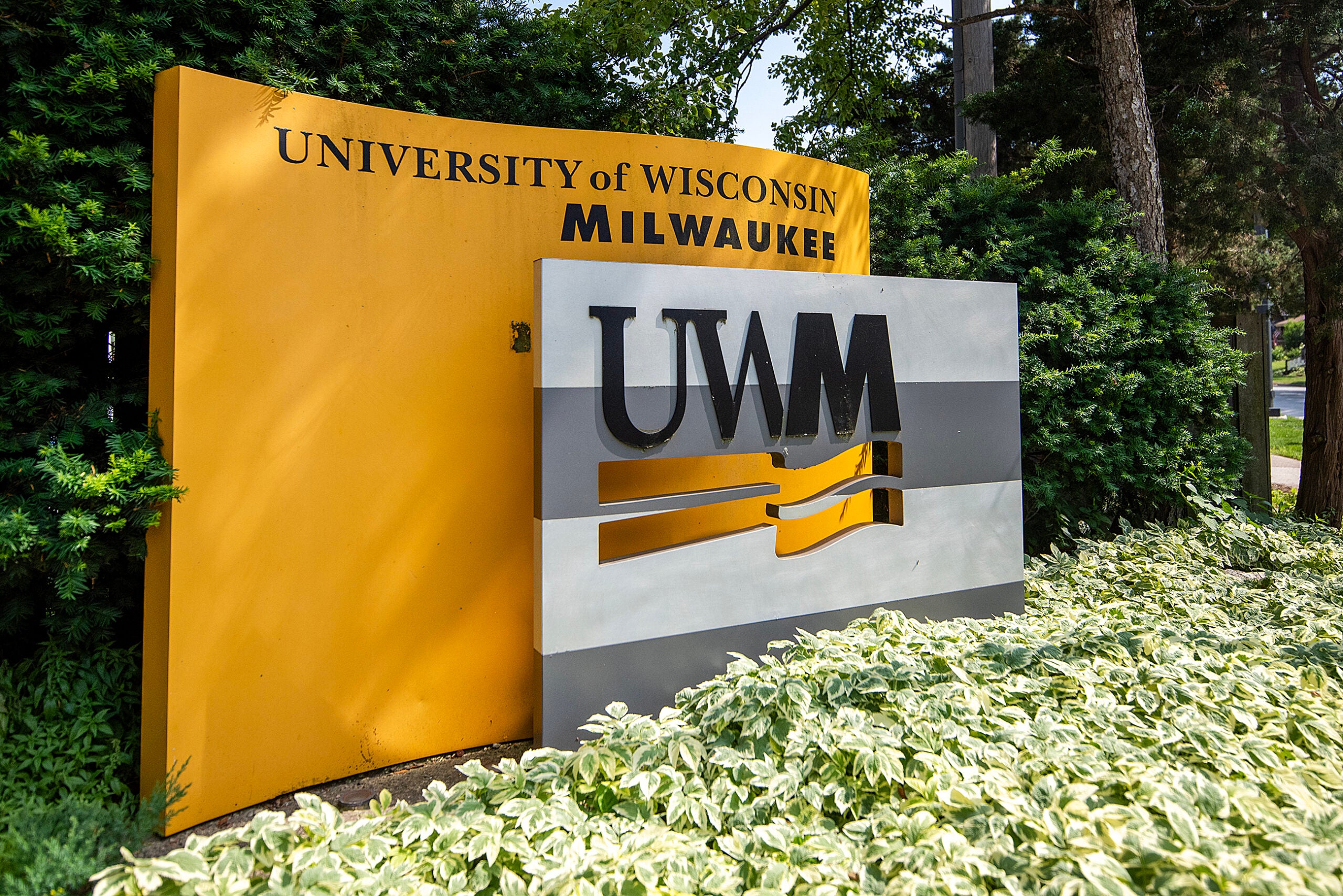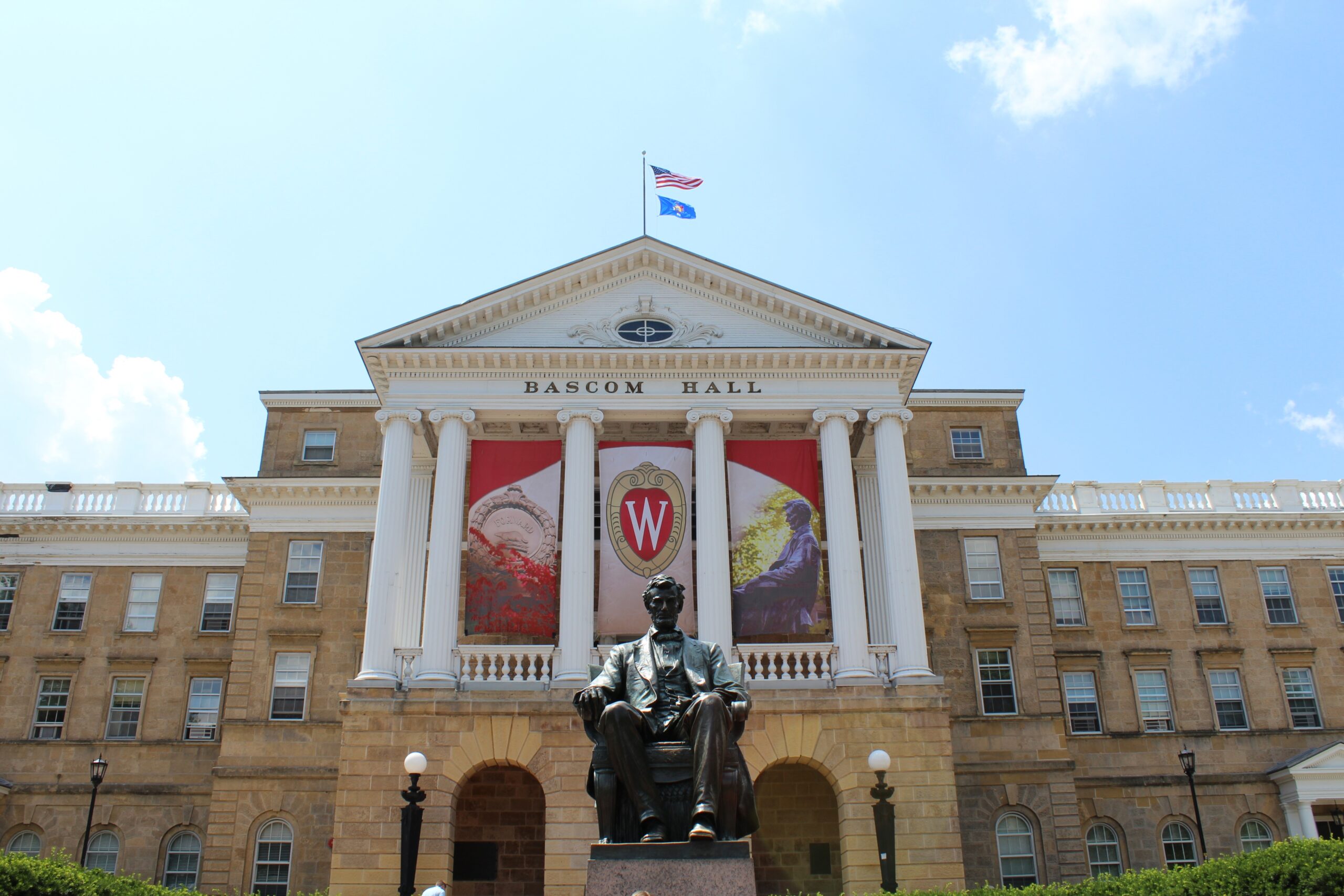All 13 University of Wisconsin System campuses have announced initial furlough plans for employees to address unprecedented budget shortfalls caused by the COVID-19 pandemic. Details vary by campus and range from intermittent furloughs for faculty to several months of consecutive, unpaid leave for staff unable to work remotely.
After initial projections showed UW System campuses faced nearly $170 million in revenue losses for the spring semester after classes were moved online and students were told to stay home in March, specific furlough plans began to emerge in April from some of the state’s four-year universities.
On April 16, the UW Board of Regents unanimously approved a policy change authorizing chancellors to devise plans to furlough employees to help balance budgets.
News with a little more humanity
WPR’s “Wisconsin Today” newsletter keeps you connected to the state you love without feeling overwhelmed. No paywall. No agenda. No corporate filter.
As information from campuses becomes available, WPR will be updating this roundup regarding how campuses are addressing shortcomings in their budgets caused by the new coronavirus pandemic.
UW-Oshkosh
UW-Oshkosh was the first four-year campus within the UW System to announce specifics on employee furloughs. On Monday, April 20, Chancellor Andy Leavitt told campus employees furloughs would begin May 4, but that they would impact employees differently. All 12-month employees not currently working would be on continuous furlough through Aug. 31, Leavitt said.
A list of frequently asked questions provided by UW System states that employees who experience wage reduction “equivalent to 8 hours in a 40-hour work week and who have earned less than $500 in that week from all employers are eligible to apply for unemployment compensation.”
All remaining 12-month employees at UW-Oshkosh will be on intermittent furlough “for a number of days to be determined” beginning May 4 and lasting through June 2021.
A UW System interim guidance document addressing furloughs was released on April 17. It sets a minimum of one furlough day for employees and a maximum of three consecutive months, though a spokeswoman for UW-Oshkosh said the policy allows campuses to exceed that.
UW-Oshkosh is facing revenue losses of nearly $8 million after classes were moved online and students were told to stay home after spring break. The campus was already in the process of cutting $16 million from its budget as part of a financial recovery plan.
UW-Milwaukee
On Tuesday, April 21, UW-Milwaukee Chancellor Mark Mone announced “position-specific” and across-the-board furloughs to address revenue losses. A UW System projection for that campus showed UW-Milwaukee faced just more than $9 million in losses during the spring semester.
Mone said UW-Milwaukee will get $17 million of federal support through the federal government’s CARES Act stimulus package recently signed into law by President Donald Trump. He said half of that will go toward financial relief for students.
“The remaining funding will help UWM with its (fiscal year) 2020 operating deficit created by COVID-19,” wrote Mone. “Having said that, the operating and enrollment-related losses continuing into this summer and next fall, under the best-case scenario, are expected to be far greater.”
In preparation for that, Money said employees whose work can’t be performed remotely and aren’t designated as essential to maintain operations on campus will be furloughed from May 2 through Aug. 31. A campus spokesperson said jobs that can’t be done remotely include maintenance or food service work. Another group of employees who perform duties remotely “that are not mission critical” will be furloughed from May 16 through Aug. 31.
Mone also announced an upcoming plan for across-the-board furloughs at UW-Milwaukee. He said initial plans are to require employees on 12-month contracts to take eight furlough days through June 2021. Those on nine-month contracts will be furloughed six days.
UW-Whitewater
In a message sent to campus Tuesday, April 21, UW-Whitewater Chancellor Dwight Watson said two types of furloughs will be used to help the campus “mitigate nearly $9 million in expenses and loss of revenue” already experienced due to the COVID-19 pandemic. He said furloughs will cover around $5 million and anticipated federal aid may cover the rest.
Watson said from May through July, employees on 12-month contracts who aren’t currently working and “other employees who will be identified this week” would be furloughed for up to three months.
All other employees, said Watson, will be required to take 13 days of furlough between May 1, 2020 and June 30, 2021.
“Please remember, that unlike a layoff, a furlough is an unpaid leave from employment that not only continues an employee’s benefits, including health insurance, vacation and sick leave accrual, but it also holds the employee’s position so that at the end of the furlough the expectation is that the employee will return to work,” wrote Watson.
UW-Superior
In a press release, UW-Superior Chancellor Renée Wachter announced that all employees would likely face intermittent furloughs of one day per two-week pay period. A campus spokeswoman said the initial plan is for those furloughs to be used between July 1 and Dec. 31. Wachter said employees were also given the option of taking voluntary furloughs beginning immediately and lasting through June 2020.
“The magnitude of what we’re facing is truly unprecedented,” wrote Wachter. “I know how hard everyone has been working and I so very greatly appreciate that effort. We truly have the most dedicated and amazing people, and that’s what makes this so very hard, but things are moving quickly, and we must take action now.”
UW System projections show UW-Superior faces a budget shortfall of $1.3 million. Wachter said the university estimates that the intermittent furloughs could save the campus approximately $1 million, though she urged caution amid uncertainty about whether fall classes would be held on campus or online.
UW-La Crosse
On Tuesday, April 21, UW-La Crosse Chancellor Joe Gow told employees that campus-wide furloughs would not be needed. But he said the campus “may have no choice but to reassign or furlough a very small group of employees whose workloads have been significantly diminished due to COVID-19 related changes.”
“Once these determinations have been made, supervisors and our Human Resources Office will work with affected employees and attempt to reassign them to alternative work responsibilities,” wrote Gow. “If it is not possible to reassign these employees, we will do everything we can to minimize the lengths of their furloughs.”
UW-Stevens Point
On Wednesday, April 22, UW-Stevens Point Chancellor Bernie Patterson announced around 200 employees would be furloughed beginning in early May and that the unpaid leave would continue through the month. That works out to around 15 percent of UW-Stevens Point’s workforce, said Patterson. He said those employees worked in “areas of the university that are not currently providing services or generating revenue.”
Patterson said campus-wide furloughs will be implemented in the weeks ahead but didn’t offer more specifics.
“These are difficult decisions for us all,” said Patterson. “I am deeply aware of the effect this will have on your lives. I appreciate your dedication and the work you do every day to support our students. These measures aim to spread the impact as equitably as possible, as compassionately as possible, while preserving our educational mission.”
Patterson said he anticipates returning to campus “with some form of face-to-face classes in the fall.”
UW-River Falls
In an email to WPR, UW-River Falls Chancellor Dean Van Galen said the campus announced a plan to use consecutive and intermittent furloughs starting May 4.
“Furlough assignments will be based on financial and operational needs as well as essential work availability and ability to perform duties remotely,” wrote Van Galen. “We are considering workforce-wide furloughs as well, to be implemented the next academic year, with campus leadership being asked to consider additional days of voluntary furlough (or some equivalent thereof). Decisions for those furloughs are expected mid-May.”
UW-Green Bay
In a Friday, April 24 memo to campus employees, Interim Chancellor Sheryl Van Gruensven said 227 staff members would be furloughed from May 2 through May 31. Also, she said administrators with annual salaries above $100,000 will take a voluntary furlough. Van Gruensven said those being furloughed received notice Thursday.
Van Gruensven also announced that because of the furloughs and “long-standing challenges,” UW-Green Bay men’s and women’s tennis will be suspended indefinitely. She said a lack of an on-campus tennis facility has meant that costs for the program have outpaced revenues.
She said the university expects to see around $250,000 in savings through the furloughs and elimination of the tennis programs.
“We need to protect our institution by ensuring we have enough financial reserves to be able to react calmly and strategically to any adverse financial situation we face in the future,” said Chancellor Elect Michael Alexander. “Failure to act now, could put our staff and our ability to deliver a quality education to our students in much greater danger in the fall.”
UW-Eau Claire
During a weekly briefing of faculty, staff and student leaders on campus Thursday, April 23, UW-Eau Claire Chancellor Jim Schmidt said updated campus expense figures show a budget shortfall of $8.6 million. As of April 10, the campus estimated losses of around $7.1 million.
Schmidt indicated the campus would be able to make some of that deficit up using emergency reserves and cash balances, which could be replenished by federal stimulus funds.
While prospective students generally have until May 1 to commit to enrolling at colleges, Schmidt said UW-Eau Claire considered “contingency scenarios” aimed at allowing the university to continue operating “even in the face of a more than 10 percent decline in overall enrollment and an emergency state budget reduction.”
Schmidt said the figures were for planning purposes only and that no solid information about fall enrollment numbers is known. But UW-Eau Claire’s scenario citing potential enrollment declines this fall is the first among UW campuses.
“We know there’s a storm coming and that it could hit us, but it’s too early to know if the storm will pass directly overhead or miss us entirely,” said Schmidt. “We’ve got to be prepared for either scenario.” Schmidt.
As for furloughs, Schmidt said departments are still determining how consecutive day furloughs could help staff retain benefits while not collecting a salary or working. He said other budget tools could include cutting supplies and travel, leaving positions open, strategic hiring freezes and intermittent or consecutive day furloughs. Schmidt said UW-Eau Claire is not considering layoffs.
UW-Stout
On Monday, April 27, UW-Stout Chancellor Katherine Frank sent a memo to campus announcing a first wave of consecutive-day furloughs. She said notices went to 69 employees with “limited workload” along with those unable to work remotely.
“I know this is an extremely difficult time for our university community, and especially for those who received furlough notices today,” Frank wrote. “I also realize there is very little I can say that will reduce stress or anxiety as this process continues.”
Frank said a second set of consecutive-day furlough notices will go out May 11, though details on the number of employees that could impact weren’t included. On the same day, she said a preliminary plan for institution-wide, intermittent furloughs and other “workforce actions” will be announced.
According to UW System figures released in March, UW-Stout faced $5.8 million in revenue losses after classes were moved online and students were told to stay home after spring break.
UW-Madison
On Wednesday, April 29, UW-Madison Chancellor Rebecca Blank announced campus-wide furloughs for faculty, academic and university staff to help address a $100 million budget deficit caused by the COVID-19 pandemic.
The length of furloughs depends on an employee’s wages, and ranges from three days of mandated, unpaid time off for those earning less than $50,000 per year up to six days for those making more than $150,000 between May 15 and October 31.
In a statement, Blank said she, along with the provost and vice chancellors, would voluntarily take 15 percent pay cuts over the same six-month period.
A work share program is also being developed for campus units and employees particularly impacted by financial losses or major interruptions to their on-site operations. Blank said the goal of the program is to keep those employees partially employed by sharing available work. UW-Madison will also offer voluntary leave without pay.
The university has already canceled new investments, frozen travel and non-essential expenses, deferred some infrastructure projects and enacted a partial hiring freeze to address COVID-19 budget impacts, Blank said.
Blank said the furloughs, work share and cost-cutting measures will save UW-Madison up to $30 million toward the $100 million shortfall. She said she doesn’t anticipate any further cuts between now and the fall semester.
UW-Parkside
On Tuesday, May 5, UW-Parkside announced changes to staffing plans for the summer semester that include intermittent, consecutive-day and workload-reduction furloughs for 300 staff members.
According to the press release, Chancellor Debbie Ford “will take a 10 percent salary reduction during the summer semester. Members of her “leadership team” will take a 5 percent reduction in pay.”
“This is an extremely challenging time for our learning community,” Ford said. “Faculty and staff remain diligent in their commitment to serving our students.”
The campus’ summer semester begins May 18 and all classes will be taught online. Enrollment for the summer session is up by around 100 students compared to summer 2019, according to the release.
The announcement didn’t specify how much money the furloughs would save or how much revenue the campus has lost due to the COVID-19 pandemic. An estimate from the UW System Administration Office lists UW-Parkside as losing more than $2.2 million through April 10.
UW-Platteville
On Wednesday, May 6, UW-Platteville Chancellor Dennis Shields announced 70 employees in units with reduced workloads or services due to students being told to stay home will be placed on consecutive-day furloughs for up to three months beginning May 18.
Other employees will be placed on temporary work reduction furloughs beginning May 18.
Shields’ note to campus didn’t specify how many would be impacted by the work reduction plans but said supervisors were working to identify potential candidates. He said impacted employees would be given seven days notice before work reduction furloughs go into effect.
Between July 1 and June 30, 2021, an intermittent furlough program will be instituted for all employee classifications, Shields said in the announcement. He said a final decision on what those furloughs would look like will be made by the end of May.
“I recognize that this is a stressful and challenging time for all of you, and it is a lot to ask our campus community to participate in a furlough program,” Shields said. “I am confident that these efforts, along with increased budget planning and reduction activities to create a sustainable budget model, will ensure that we are able to provide a world-class education for generations to come.”
The chancellor’s note stated UW-Platteville will have lost $6.5 million in revenue through the summer due to the pandemic. That’s on top of an existing budget shortfall of $8.2 million, said Shields. The campus received around $4.8 million in federal assistance from the CARES Act COVID-19 stimulus package, but Shields said half of that must be spent on emergency financial aid grants to students.
Editor’s note: Wisconsin Public Radio is a service of the University of Wisconsin-Madison and the Educational Communications Board.
Wisconsin Public Radio, © Copyright 2026, Board of Regents of the University of Wisconsin System and Wisconsin Educational Communications Board.




